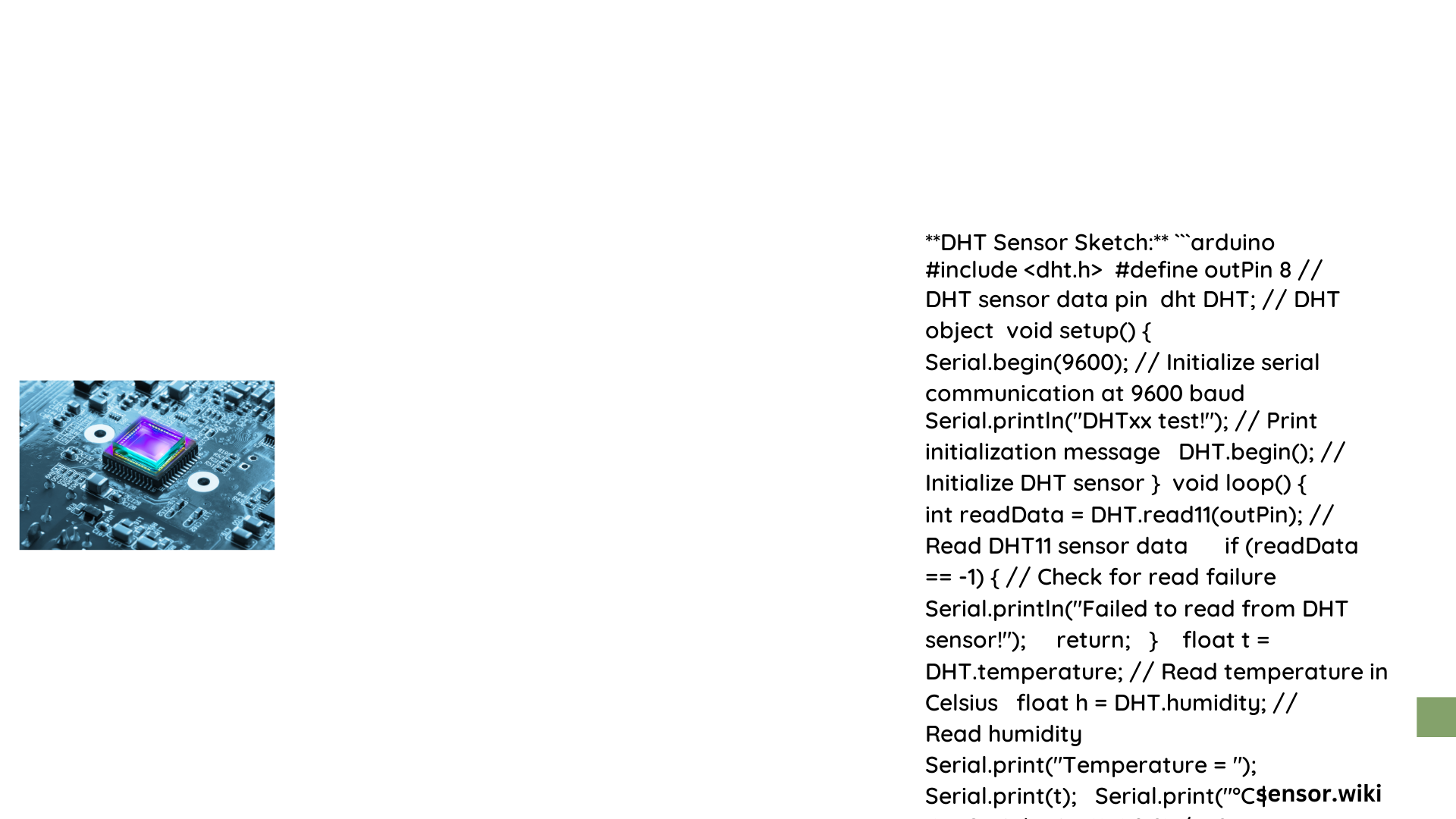DHT Sensor Sketch: Comprehensive Arduino Sensor Integration Guide
The DHT sensor sketch provides an essential method for measuring temperature and humidity using Arduino microcontrollers. By leveraging specialized libraries and precise wiring techniques, developers can create robust environmental monitoring systems with minimal complexity. This guide explores comprehensive strategies for implementing, configuring, and optimizing DHT sensor sketches across various Arduino platforms.
What Are the Essential Components for a DHT Sensor Sketch?
Hardware Requirements
- Arduino Board (Uno, Nano, etc.)
- DHT11 or DHT22 Sensor
- 10K Ohm Pull-up Resistor
- Jumper Wires
Pin Configuration Details
| Sensor Pin | Arduino Connection |
|---|---|
| VCC | 5V Power |
| Data | Digital Pin (D8) |
| GND | Ground |
How to Wire the DHT Sensor Correctly?
Wiring Steps
- Connect VCC to Arduino 5V
- Connect GND to Arduino Ground
- Connect Data pin to chosen digital pin
- Install 10K Ohm pull-up resistor between Data and VCC
What Library Should You Use for DHT Sensor Sketch?
Library Installation Methods
- Arduino Library Manager
- Open Arduino IDE
- Navigate to Sketch > Include Library > Manage Libraries
- Search “DHT sensor library”
-
Install latest version
-
Manual Installation
- Download library from GitHub
- Extract to Arduino libraries folder
- Restart Arduino IDE
How to Write a Basic DHT Sensor Sketch?
Sample Code Implementation
#include <DHT.h>
#define DHTPIN 8 // Digital pin connection
#define DHTTYPE DHT11 // Sensor type
DHT dht(DHTPIN, DHTTYPE);
void setup() {
Serial.begin(9600);
dht.begin();
}
void loop() {
delay(2000); // Wait between measurements
float humidity = dht.readHumidity();
float temperature = dht.readTemperature();
if (isnan(humidity) || isnan(temperature)) {
Serial.println("Sensor reading error!");
return;
}
Serial.print("Humidity: ");
Serial.print(humidity);
Serial.print("% Temperature: ");
Serial.print(temperature);
Serial.println("°C");
}
What Are Common Troubleshooting Techniques?
Potential Issues and Solutions
- Inaccurate Readings
- Verify proper wiring
- Check sensor condition
-
Ensure pull-up resistor connection
-
Communication Errors
- Confirm correct pin configuration
- Validate library installation
- Test with different digital pins
How to Calibrate DHT Sensors?
Calibration Strategies
- Compare readings with professional thermometers
- Check temperature accuracy within ±0.5°C
- Validate humidity measurements within ±2-5%
Performance Specifications
| Sensor Type | Temperature Accuracy | Humidity Accuracy | Measurement Range |
|---|---|---|---|
| DHT11 | ±2°C | ±5% | 0-50°C, 20-90% RH |
| DHT22 | ±0.5°C | ±2-5% | -40-80°C, 0-100% RH |
Best Practices for DHT Sensor Sketches
Optimization Tips
- Use non-blocking delay techniques
- Implement error handling
- Consider power consumption
- Place sensors away from direct heat sources
Conclusion
Mastering the DHT sensor sketch requires understanding hardware connections, library usage, and precise coding techniques. By following this comprehensive guide, developers can create reliable temperature and humidity monitoring solutions.

